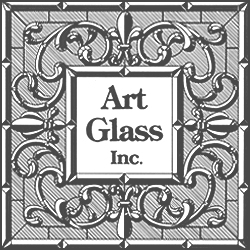
Beveled Glass
When a kid in the 1950s, I was an amateur astronomer and made some of my own telescopes, both refractors and reflectors (using lenses and mirrors). Later on in college I worked in the physics department's optics lab. So I was well acquainted with the interactions of glass and light when I started working with stained glass. Soon I realized that, while stained glass revels in glass' translucence and color filtering of light, it pays little respect to one of the most remarkable effects of glass on light — refraction. Who hasn't marveled at a rainbow or the shimmer of light passing through a liquid?
So why not beveled glass? Beveling makes those transiting light beams dance. Turning those leaded-together glass segments into prisms and lenses adds a whole new visual dimension to a flat leaded-glass panel. But I wasn't so enamored of the Victorian tradition of beveling glass, in which each glass segment is slavishly ringed with a crisp, uniform, neatly mitered bevel. While Art Glass, Inc. produced many such traditionally beveled windows, even in the Victorian style, its beveling repertoire also included beveling with tinted plate glasses, varied width bevels, and non-angular lense shaping of the glass. The latter was accomplished by substituting sanding belts for the traditional grinding wheels of the beveling process.
There are four stages to hand beveling: rough grinding on either a diamond wheel or iron lap with an abrasive slurry (usually silicone carbide); smooth grinding on a stone wheel; rough polishing on a cork wheel with a powdered pumice slurry; and polishing on a felt wheel with a cerium oxide (or a jeweler's rouge) slurry. Pressing glass against the wheels at just the right angle and rocking with just the right motion was quite a challenge to hand-eye coordination. But as demanding and labor intensive as it all was, the gleaming, light bending result was well worth the effort.
Photos can't do justice to the shimmering magic that happens between beveled glass and the human eye. But the ones following give a good sense of the varied styles of beveled glass that Art Glass produced.
— Ray Gregory
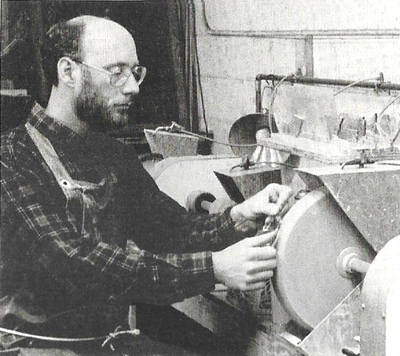
Beveled glass — refraction and reflection
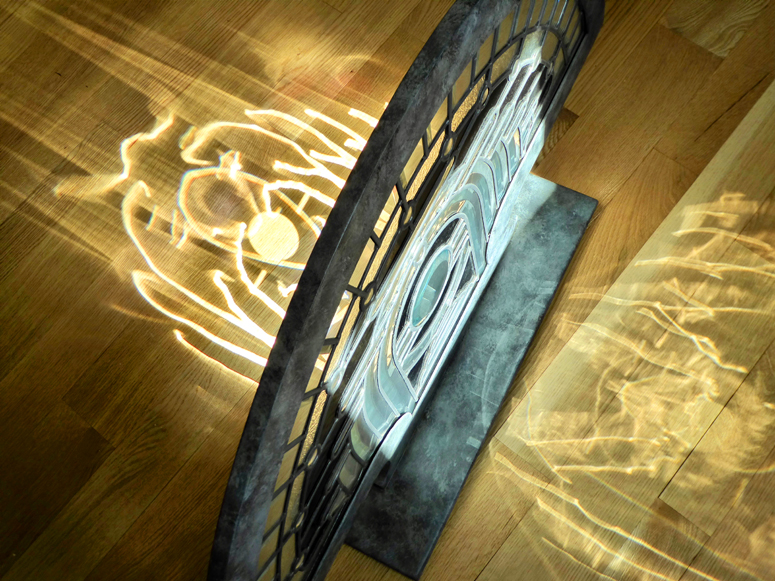
Refracting a sunset
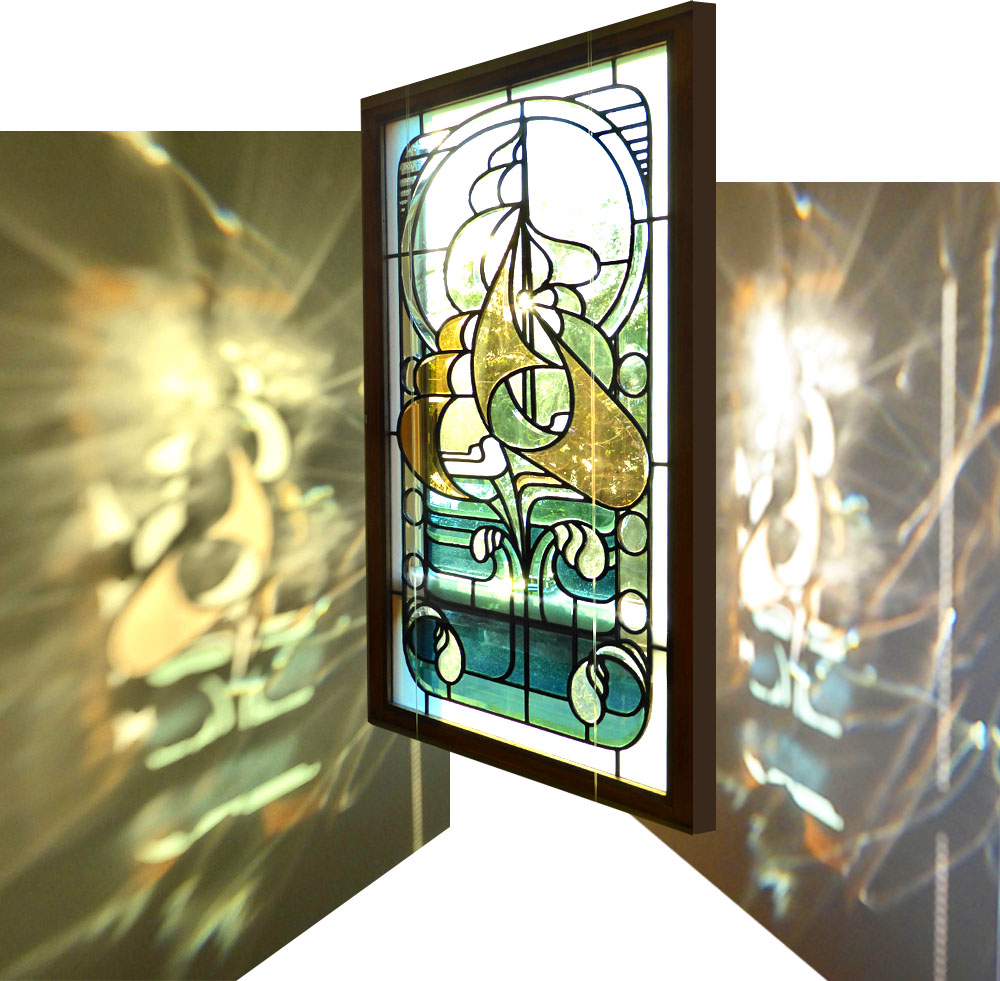
In the Victorian Tradition and Style
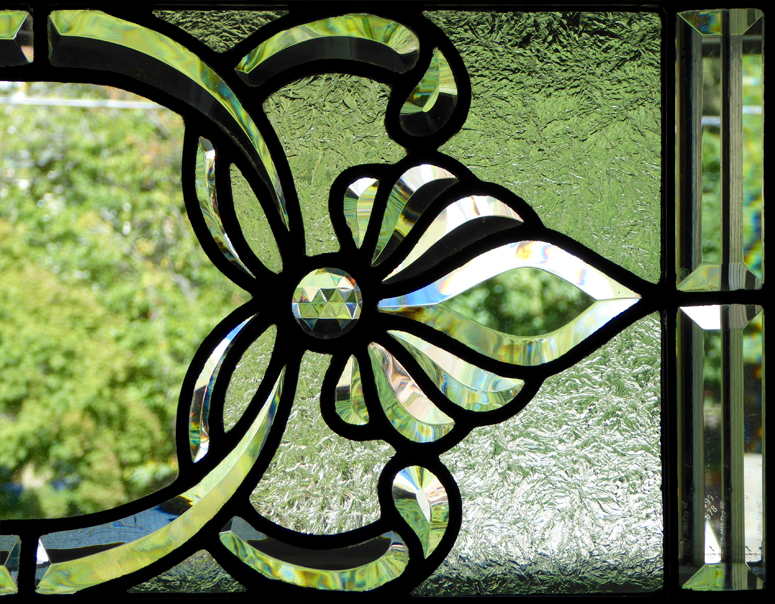
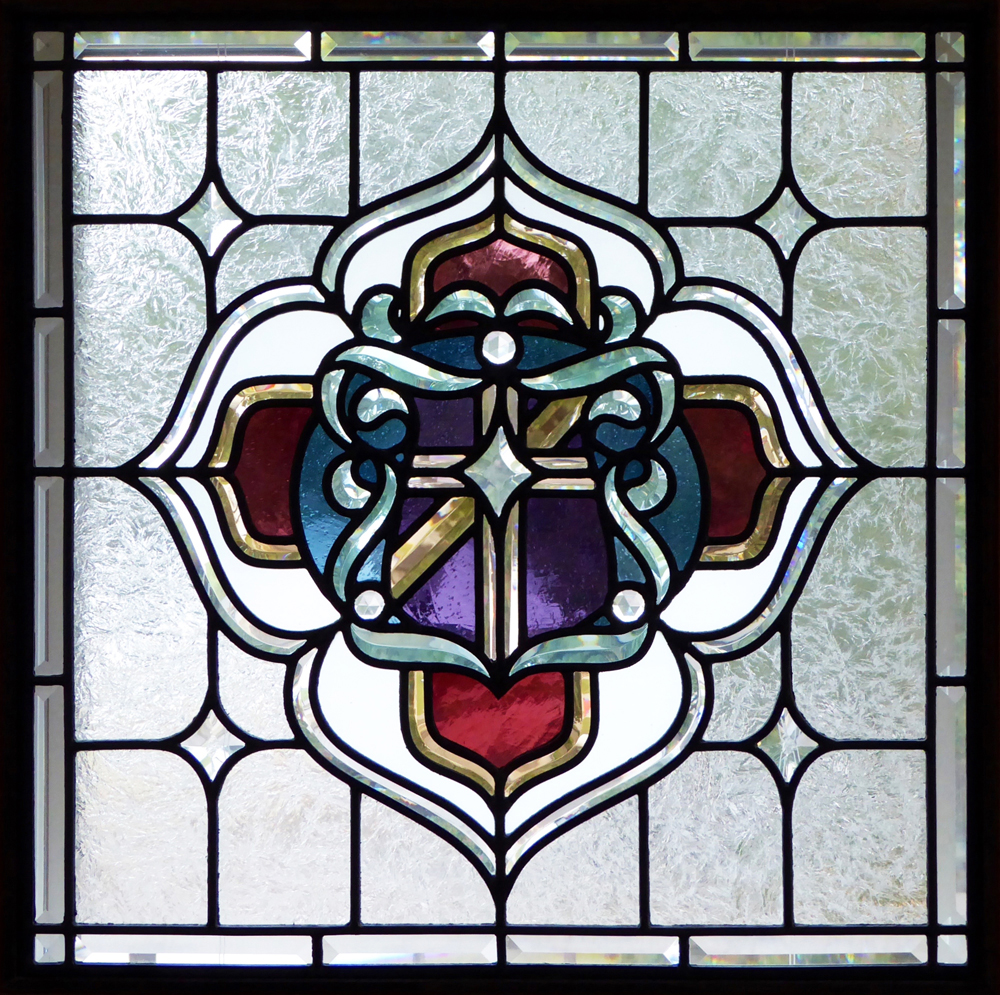
Ray Gregory, stained glass, beveled glass
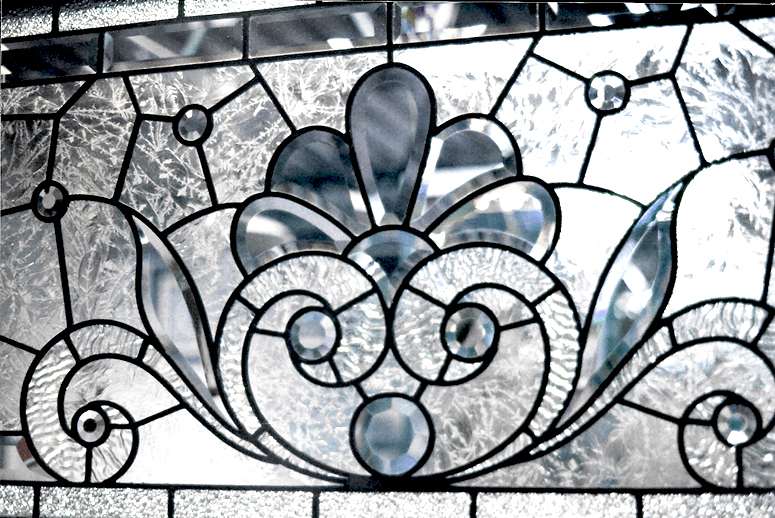
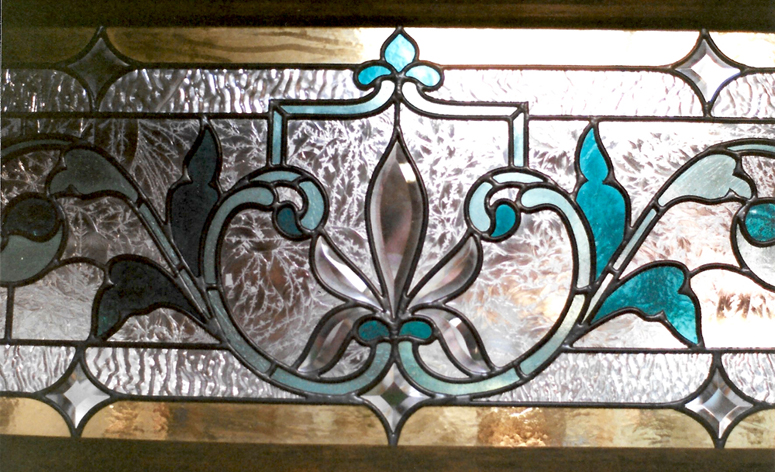
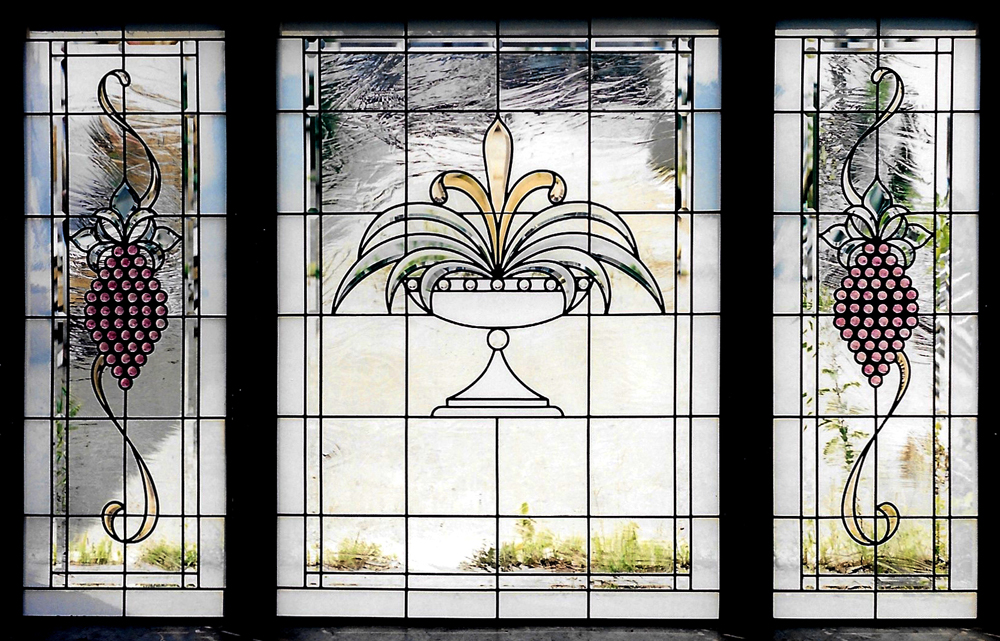
Ray Gregory, stained glass, beveled glass
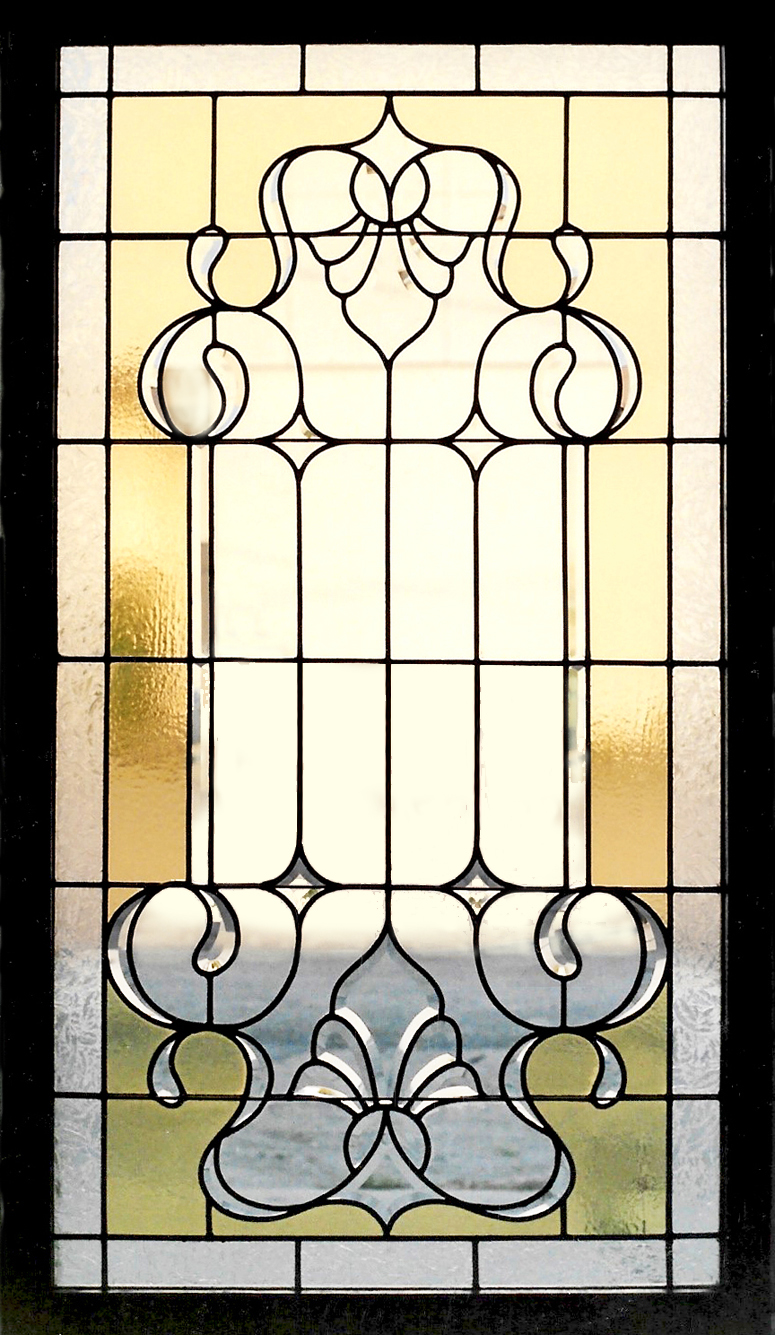
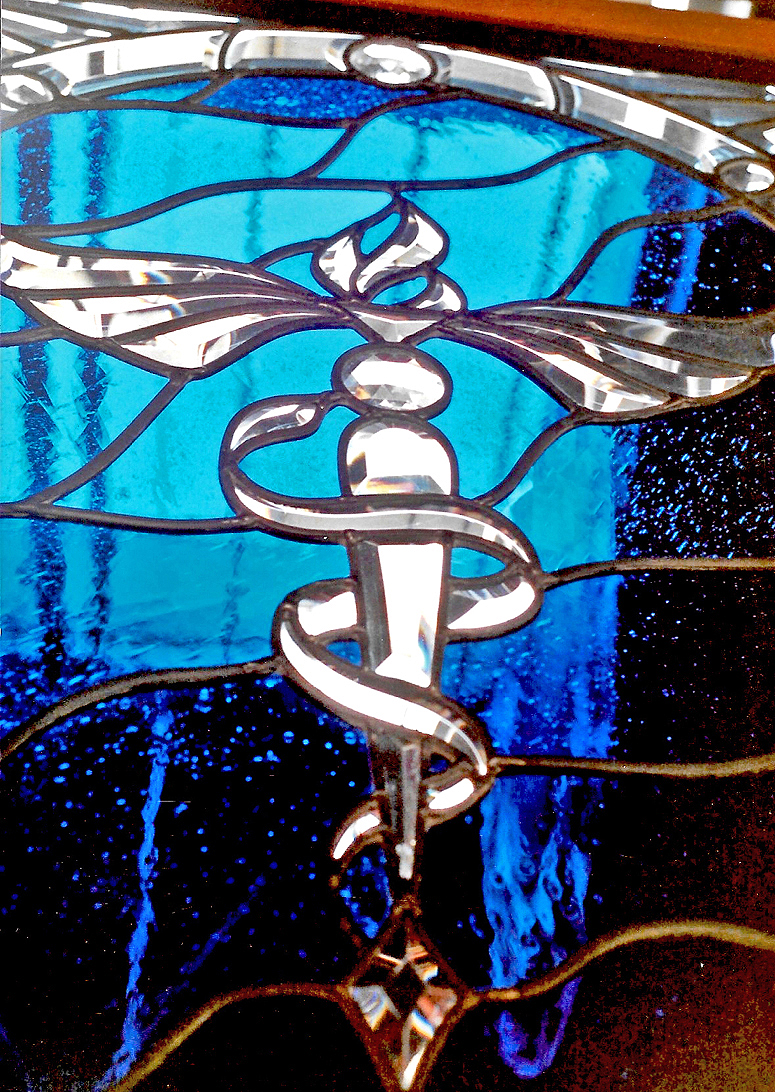
Ray Gregory, stained glass, beveled glass
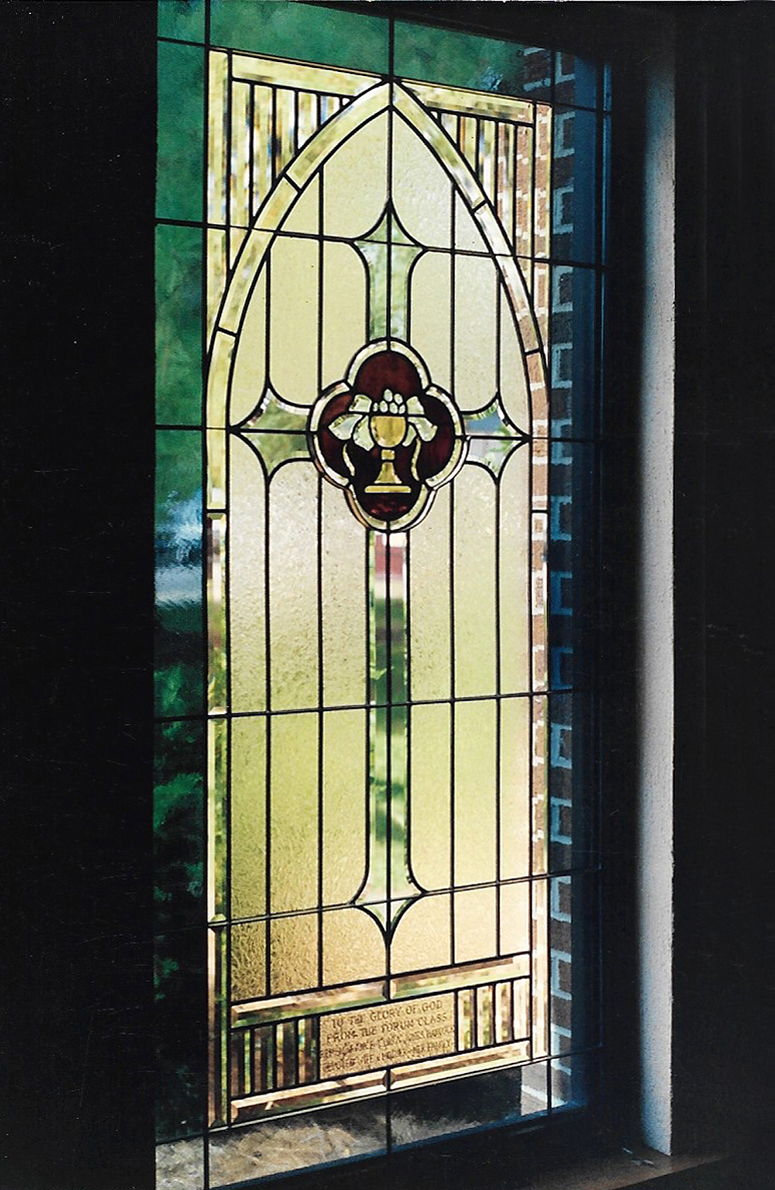
Ray Gregory, stained glass, beveled glass
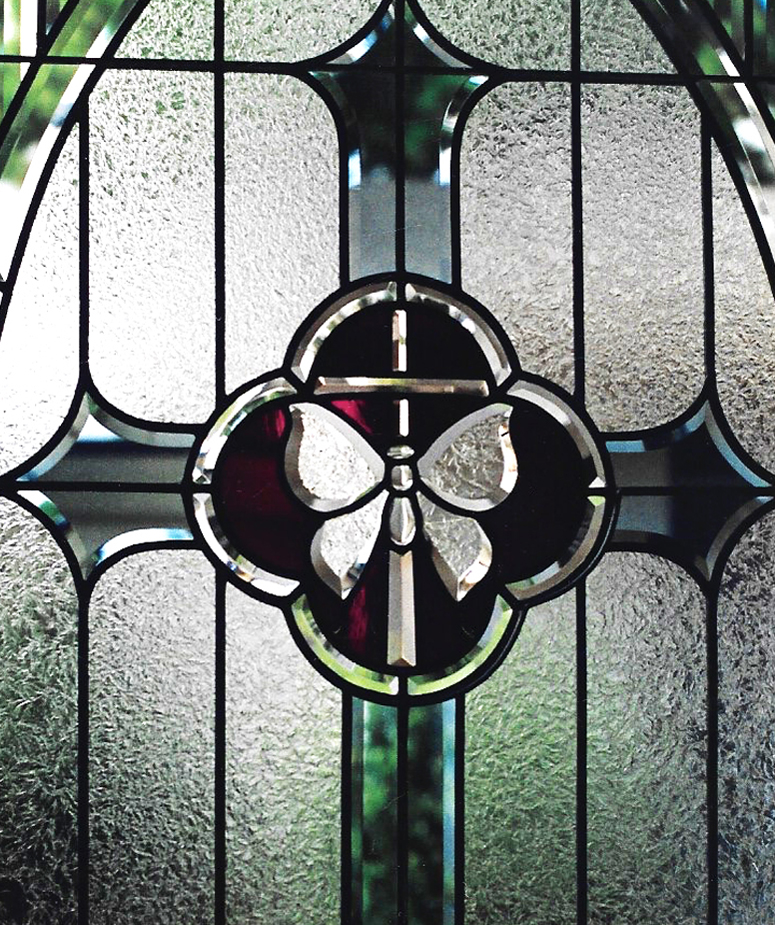
Ray Gregory, stained glass, beveled glass
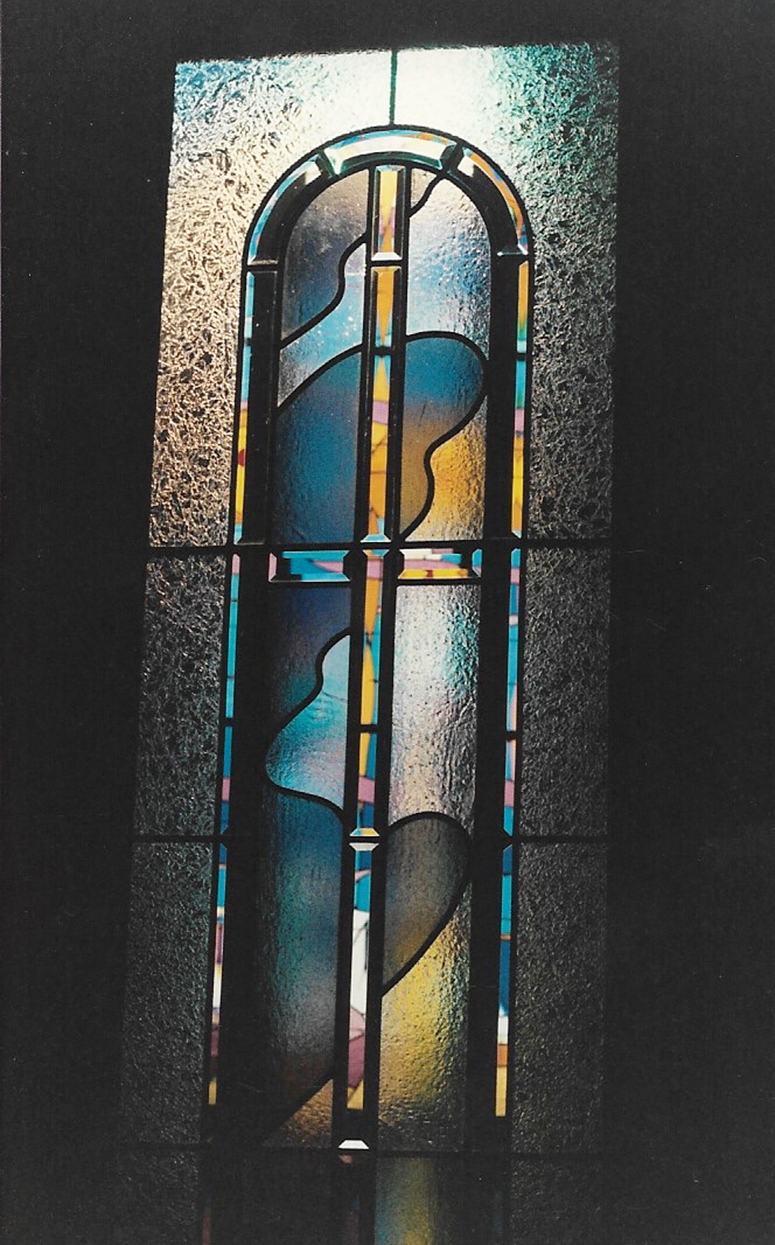
Ray Gregory, stained glass, beveled glass
Former fisherman's Warf at Willoughby Spit
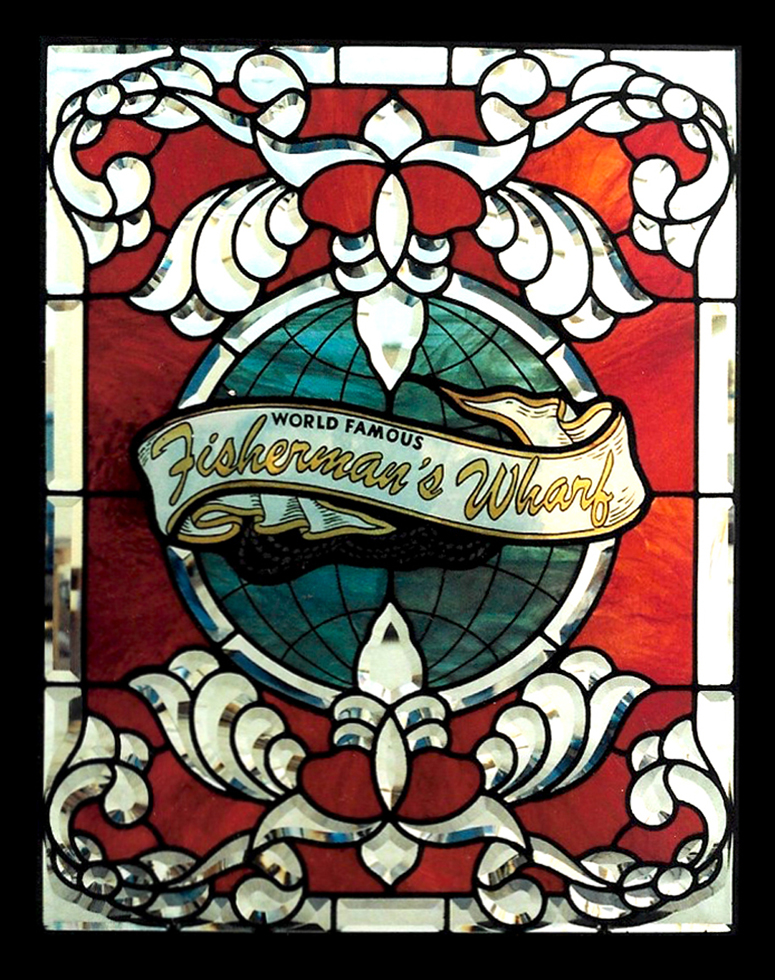
Ray Gregory, stained glass, beveled glass
Capt. George's, Laskin Road, Virginia Beach
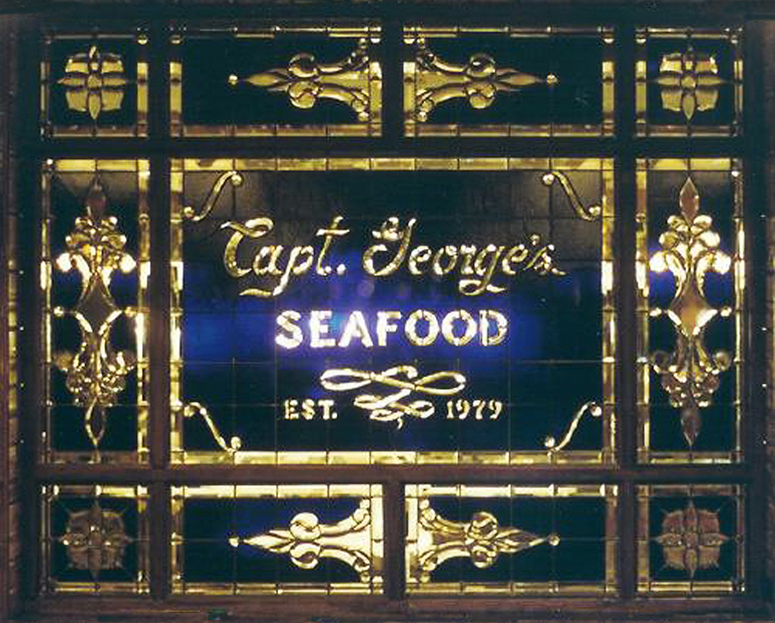
Ray Gregory, Capt. George's, Seafood, stained glass, beveled glass
Key Largo Lounge at the former Fisherman's Wharf, Willoughby Spit
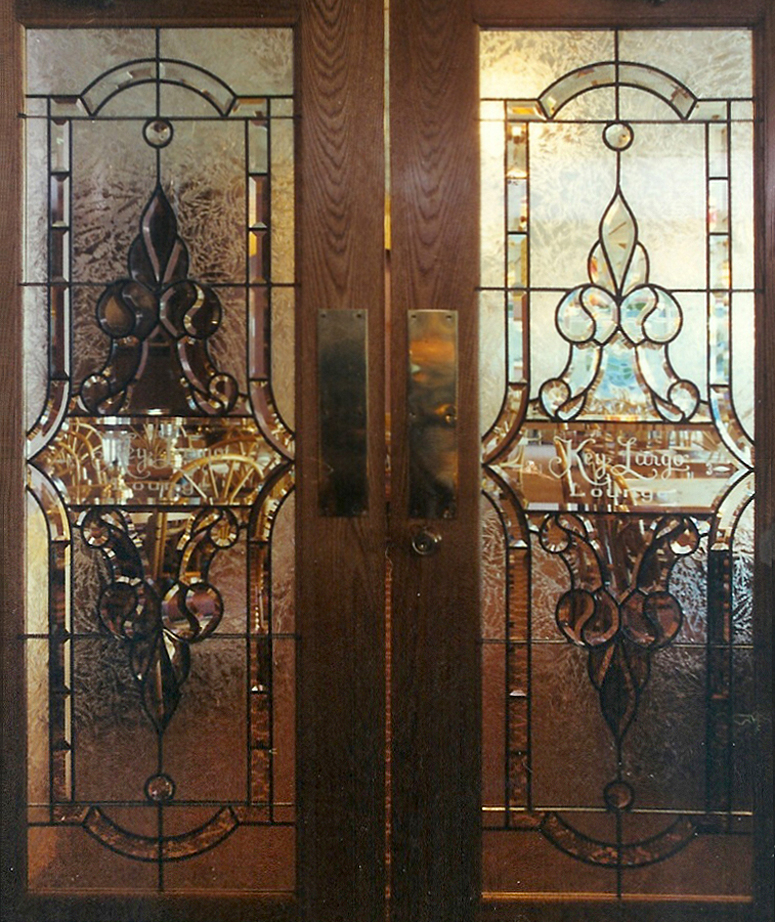
Ray Gregory, stained glass, beveled glass
Beveled diamond, with brass-clad came, for a jewelry store
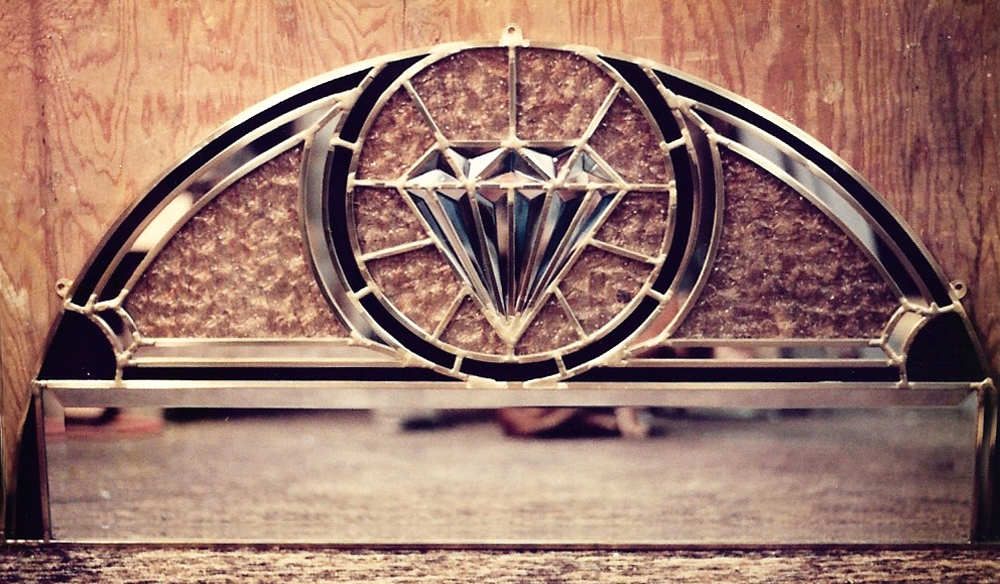
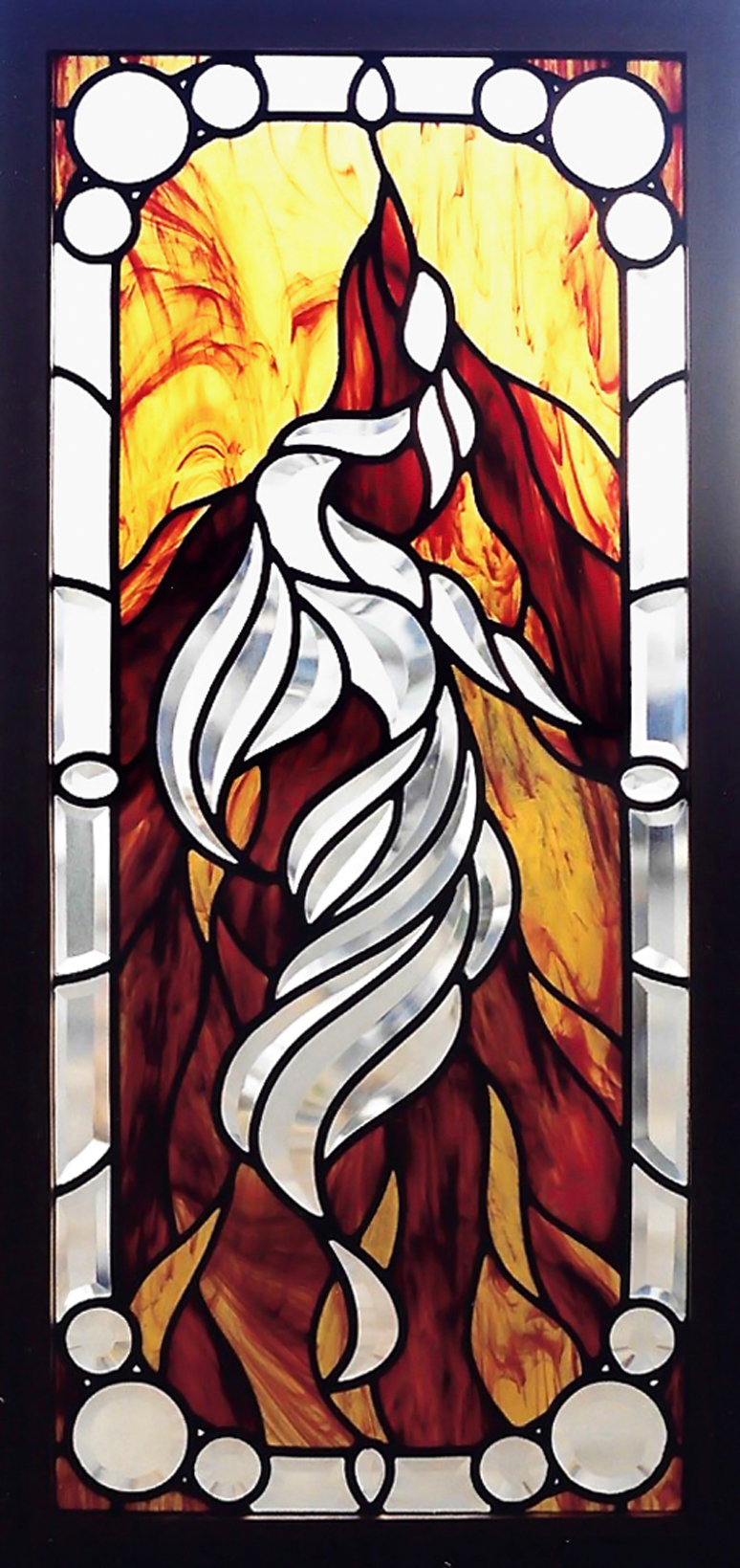
Ray Gregory, stained glass, beveled glass
A more contemporary design, though still the Victorian standard of all-around, neatly mitered bevels
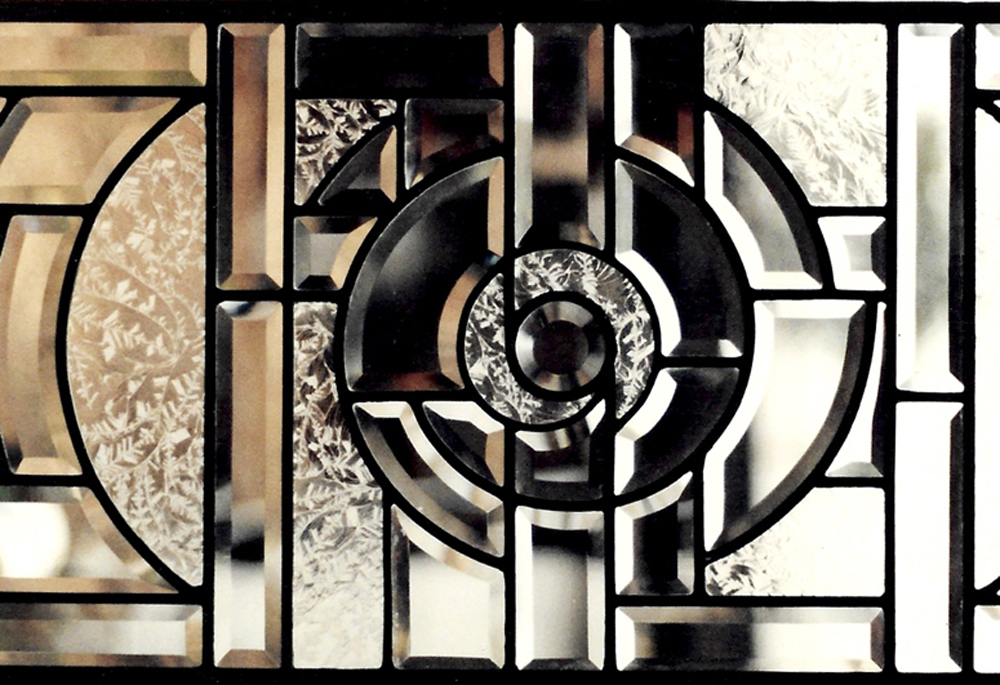
Ray Gregory, stained glass, beveled glass
Clipped and Unmitered Beveling
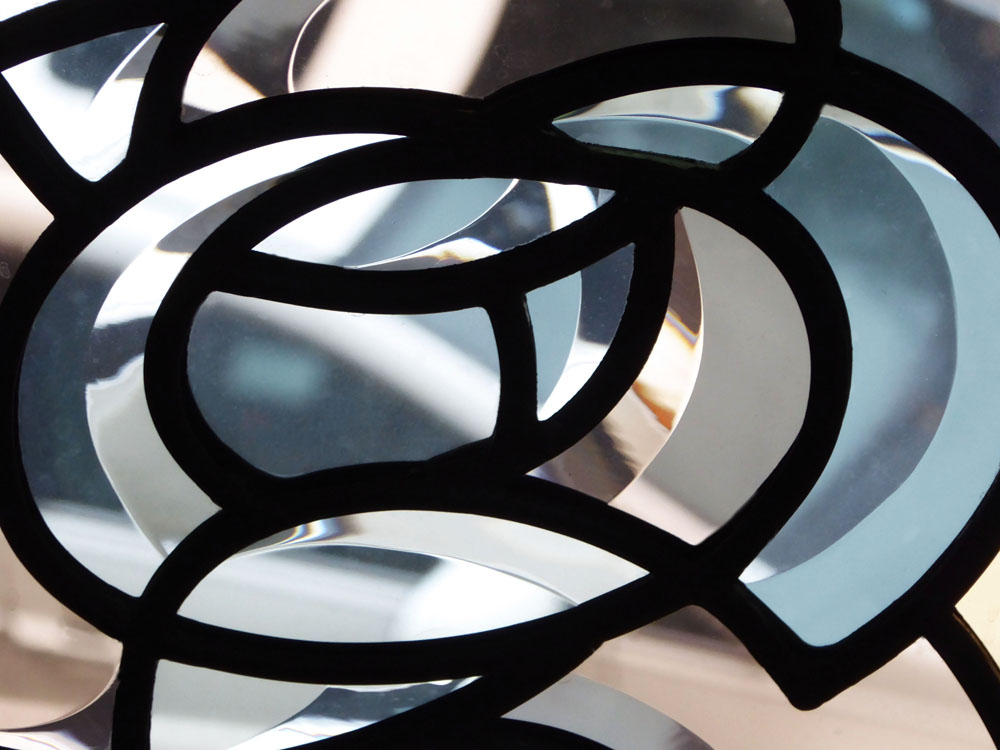
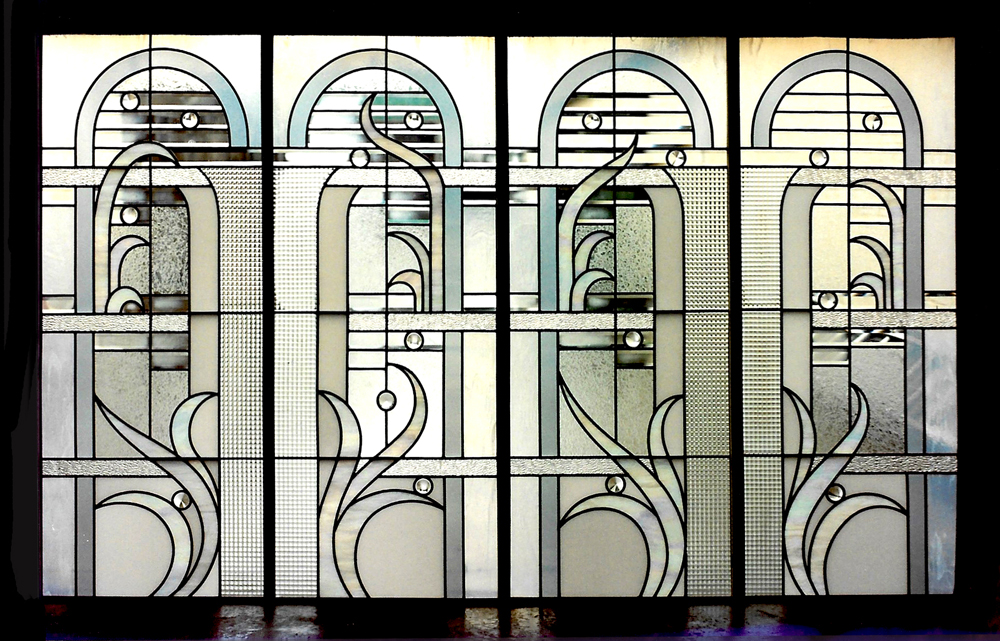
Ray Gregory, stained glass, beveled glass
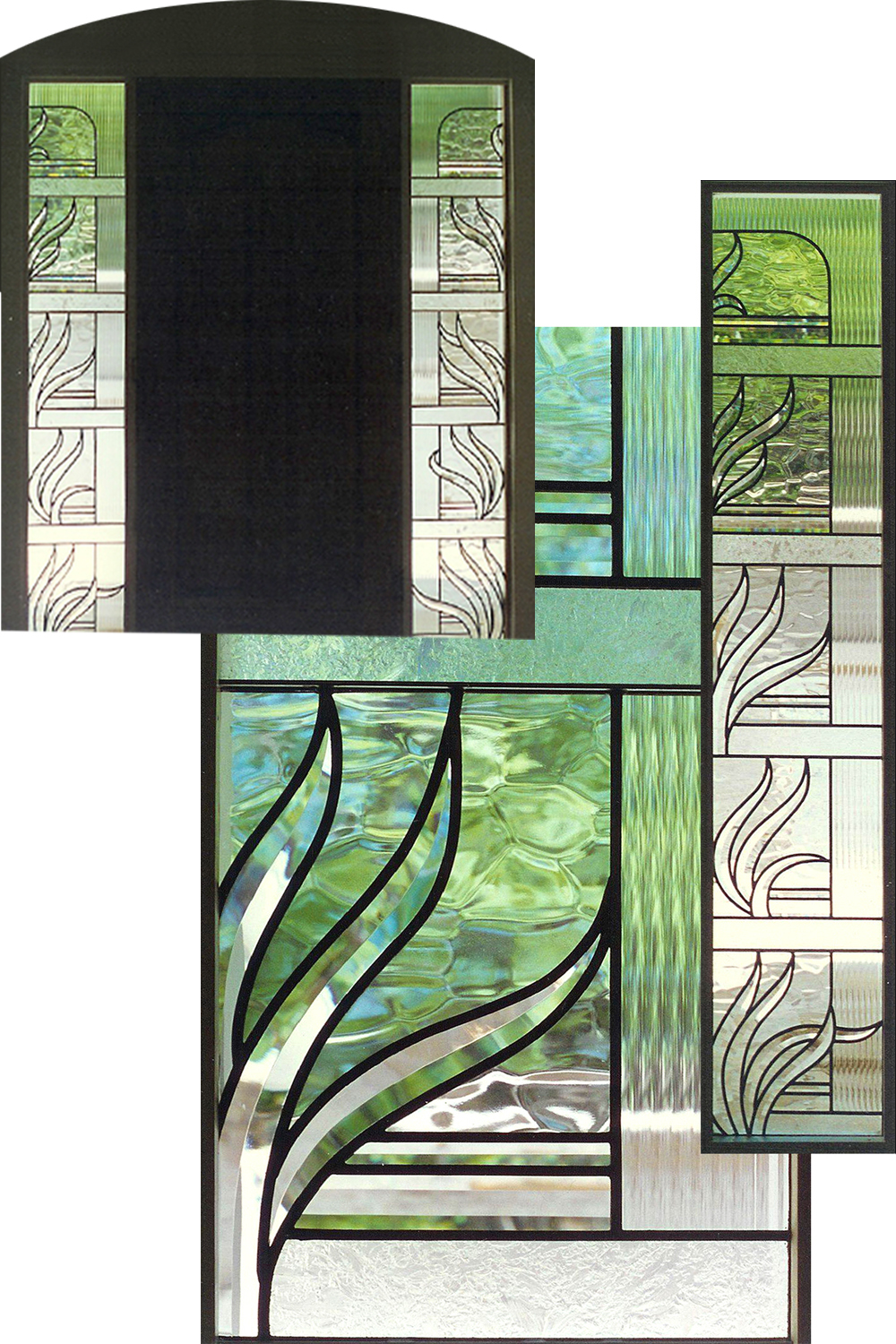
Ray Gregory, stained glass, beveled glass
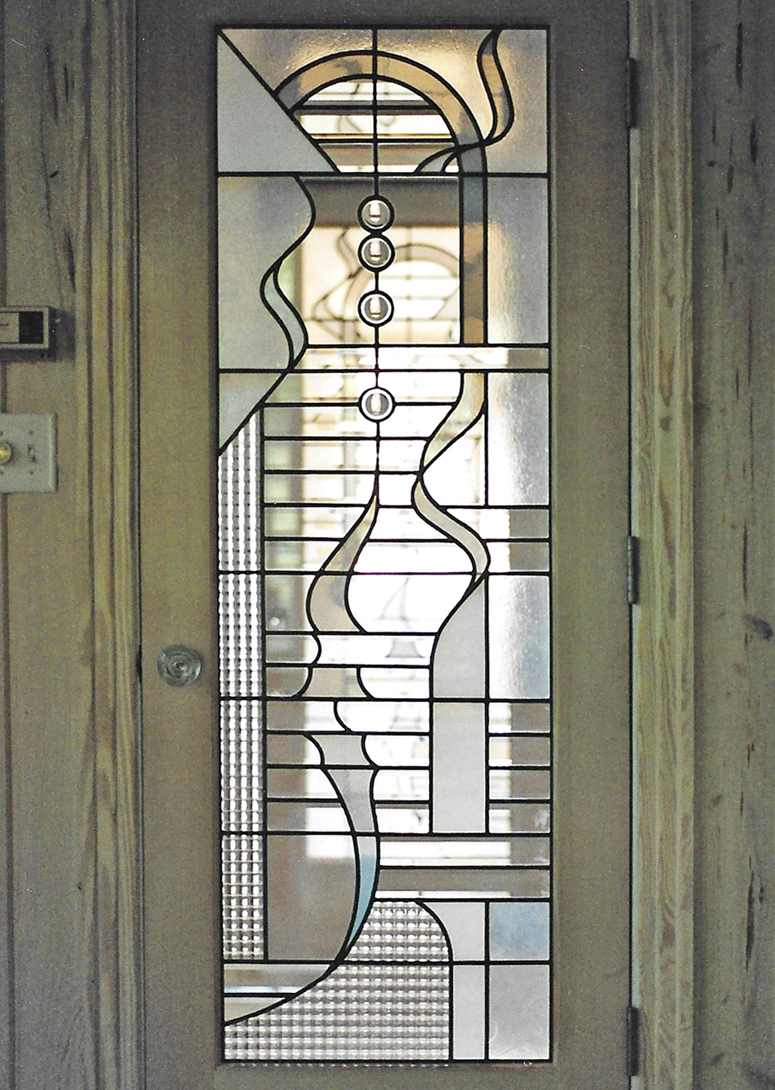
Ray Gregory, stained glass, beveled glass
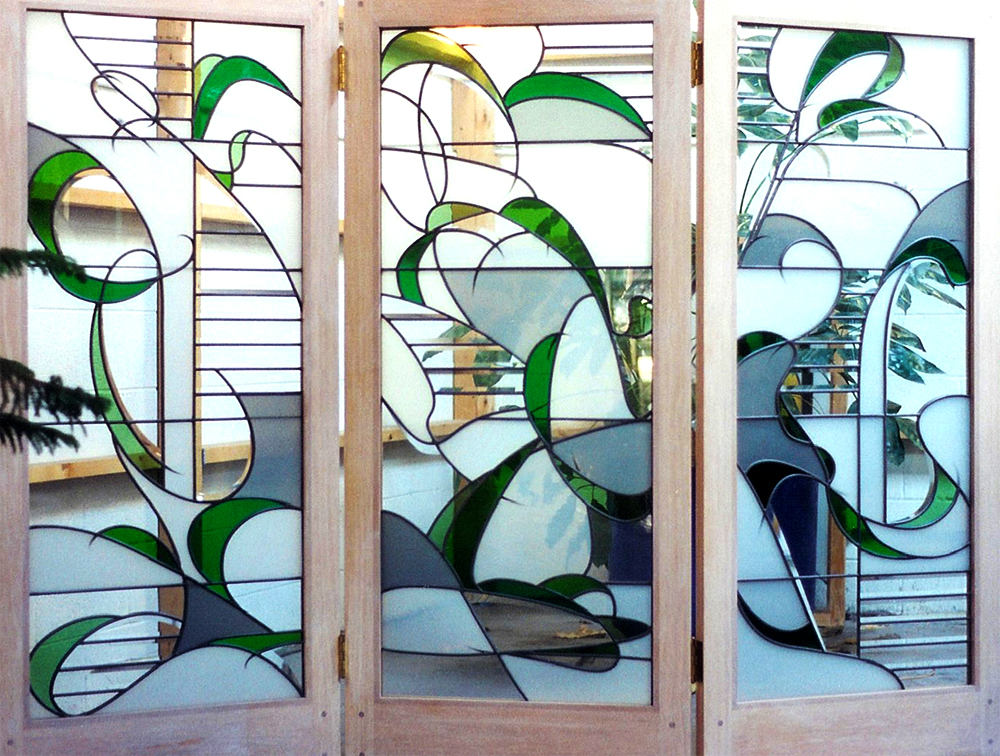
Ray Gregory, stained glass, beveled glass
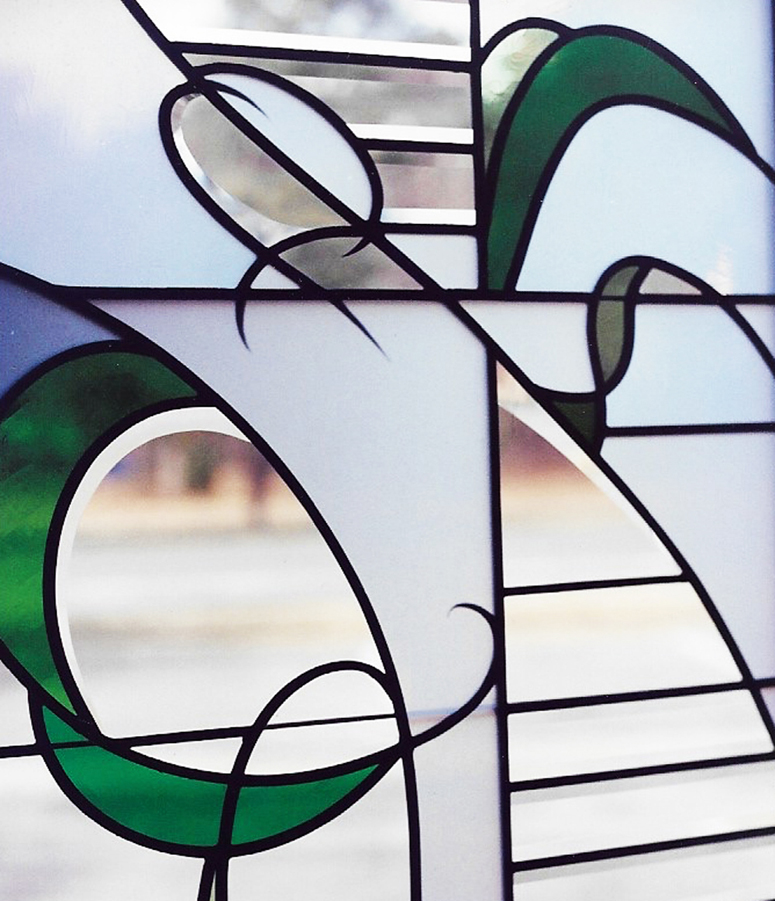

Ray Gregory, stained glass, beveled glass
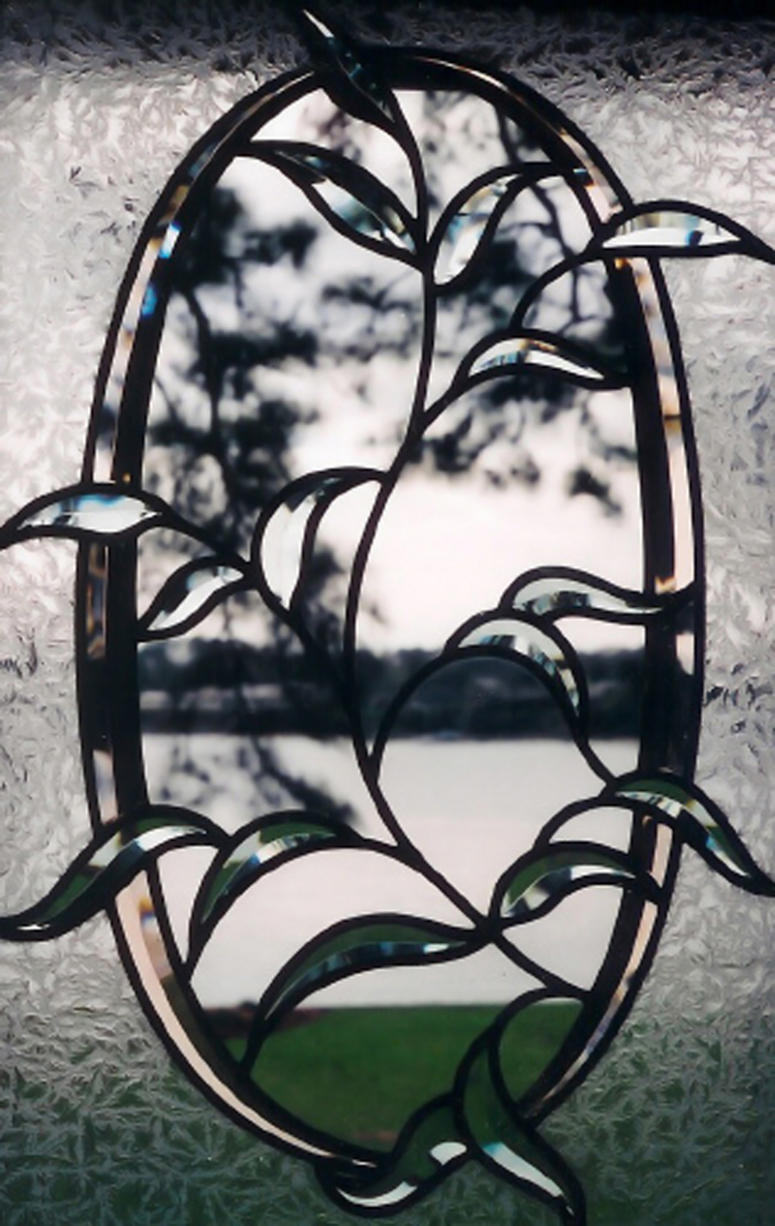
Ray Gregory, stained glass, beveled glass
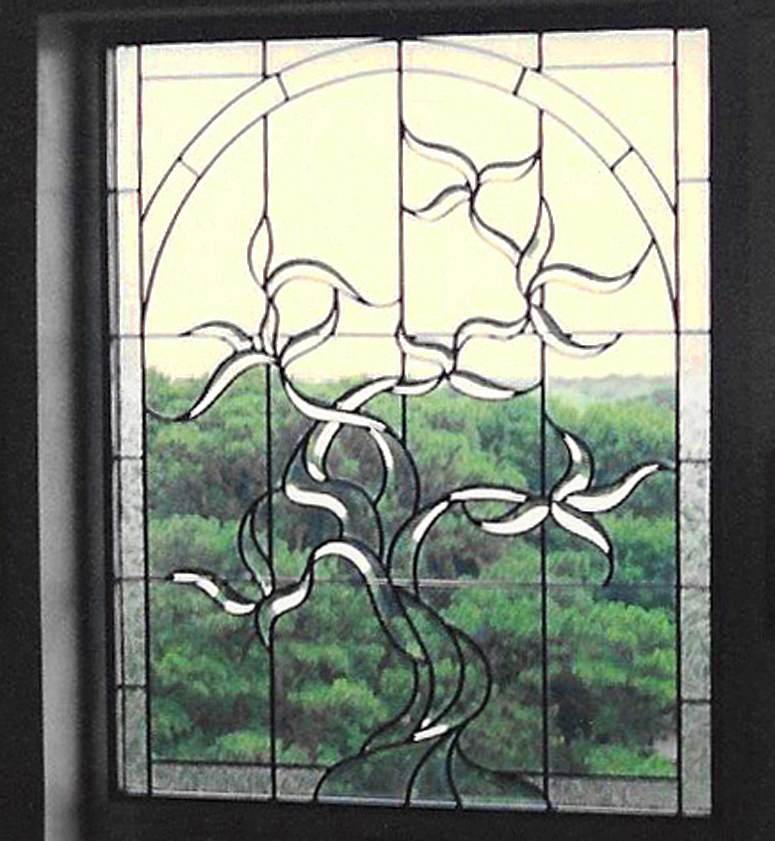
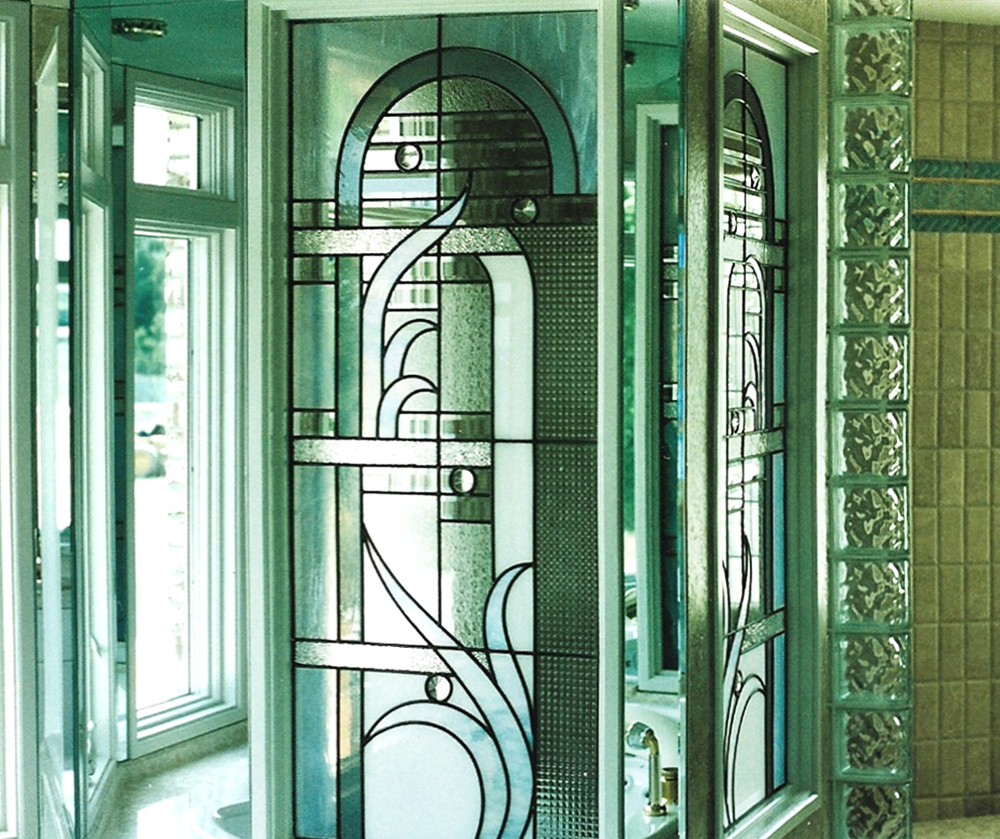
Ray Gregory, stained glass, beveled glass
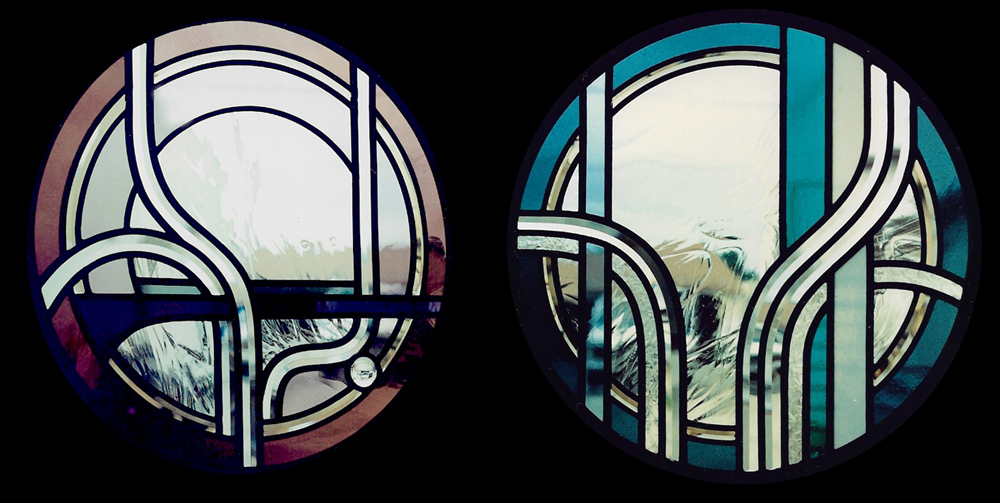
Ray Gregory, stained glass, beveled glass
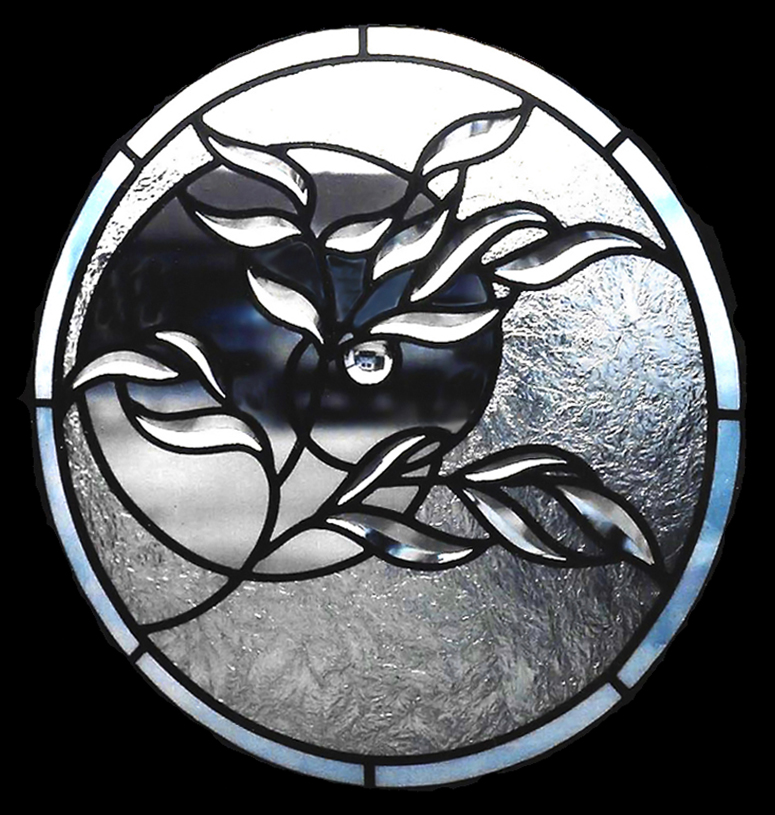
Ray Gregory, stained glass, beveled glass
Varied Bevel Widths and Lens Shaping
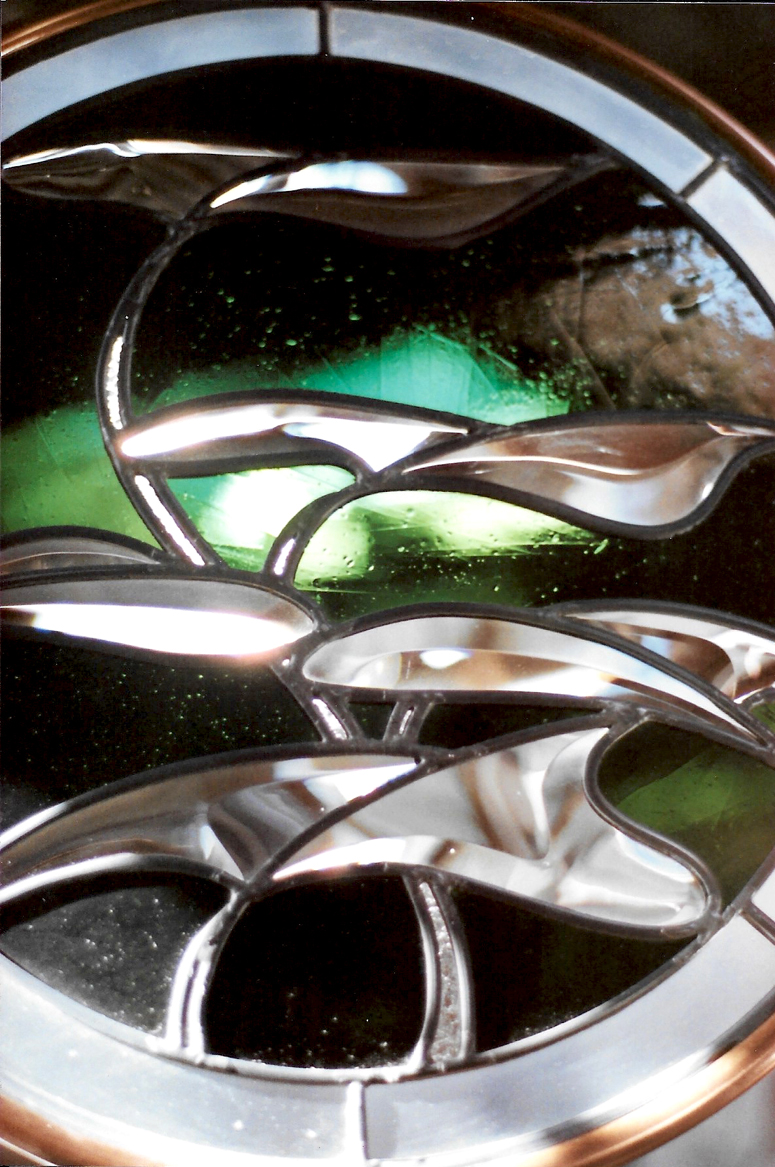

Ray Gregory, stained glass, beveled glass
The fluid beauty of lense shaping:
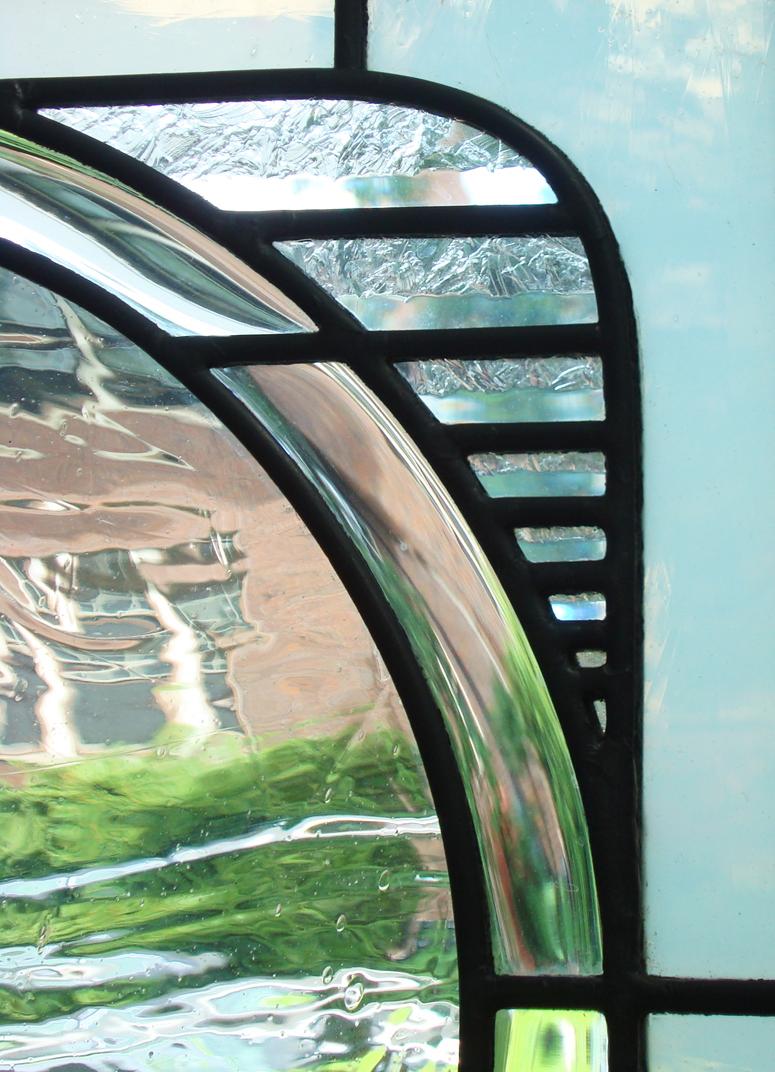
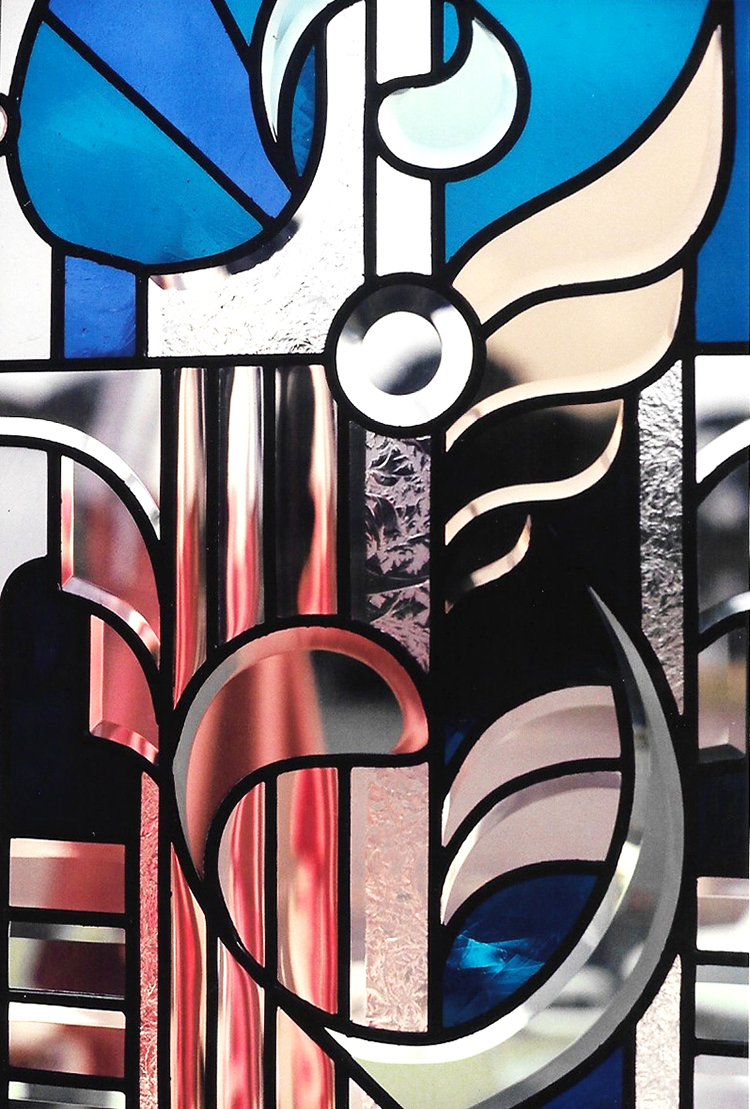

Ray Gregory, stained glass, beveled glass
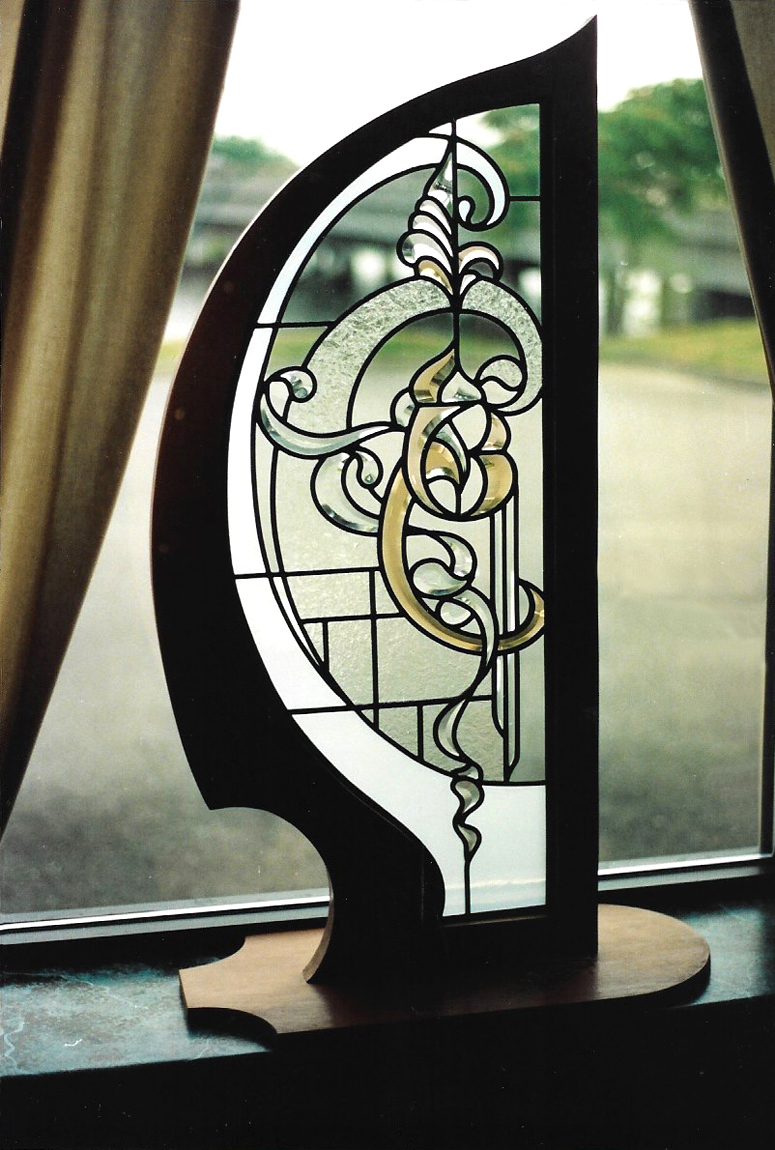
Ray Gregory, stained glass, beveled glass
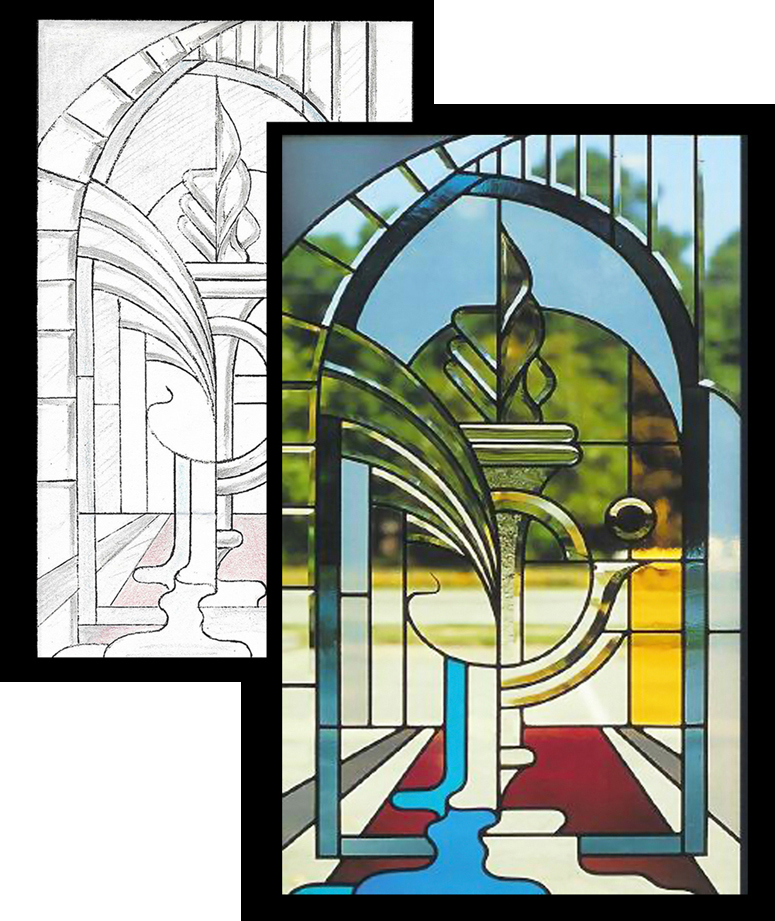
Ray Gregory, stained glass, beveled glass
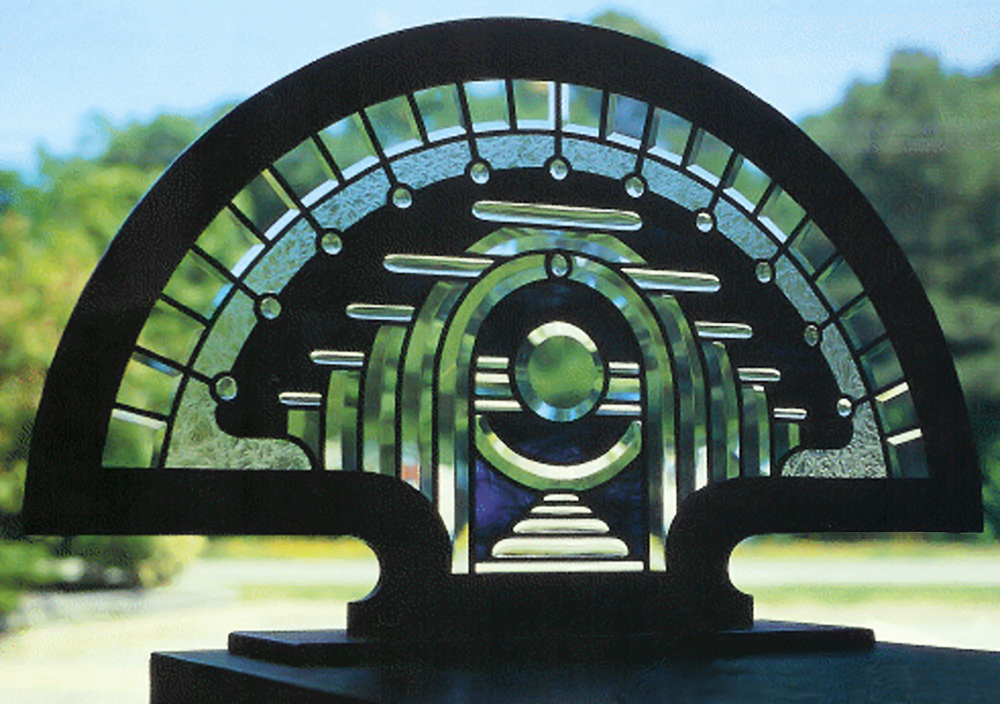
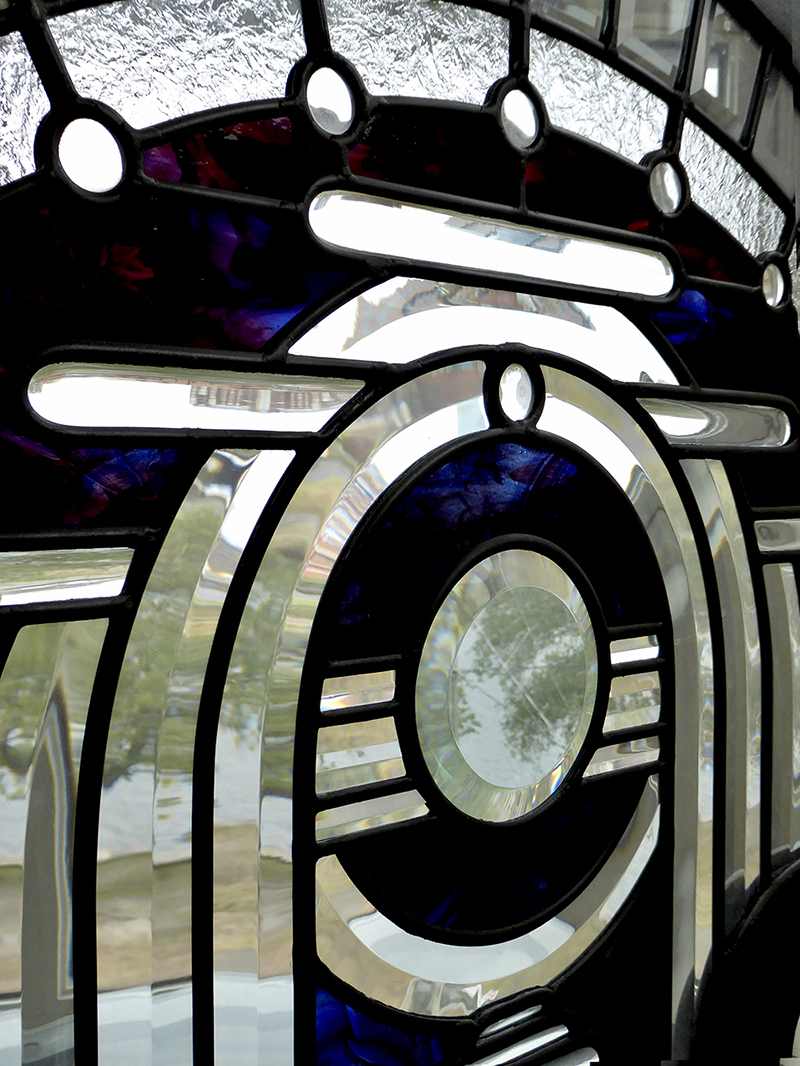
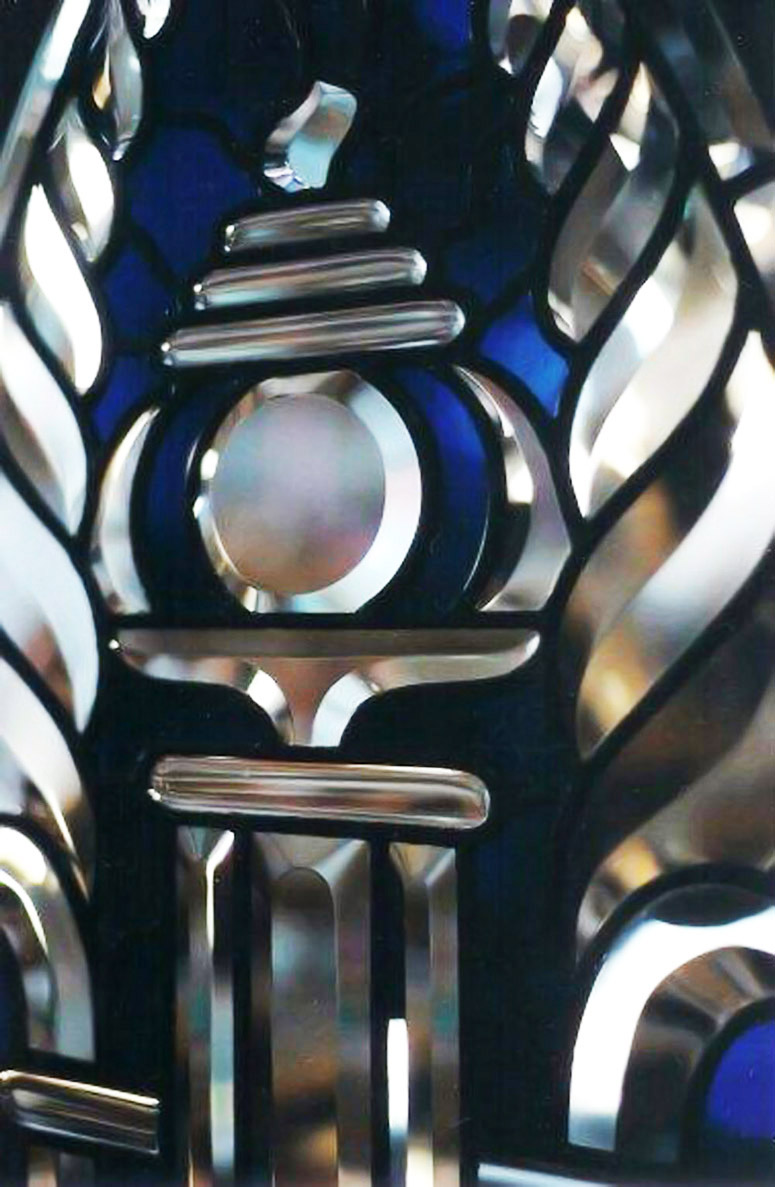
d glass, beveled glass
Back to Home Page |









































